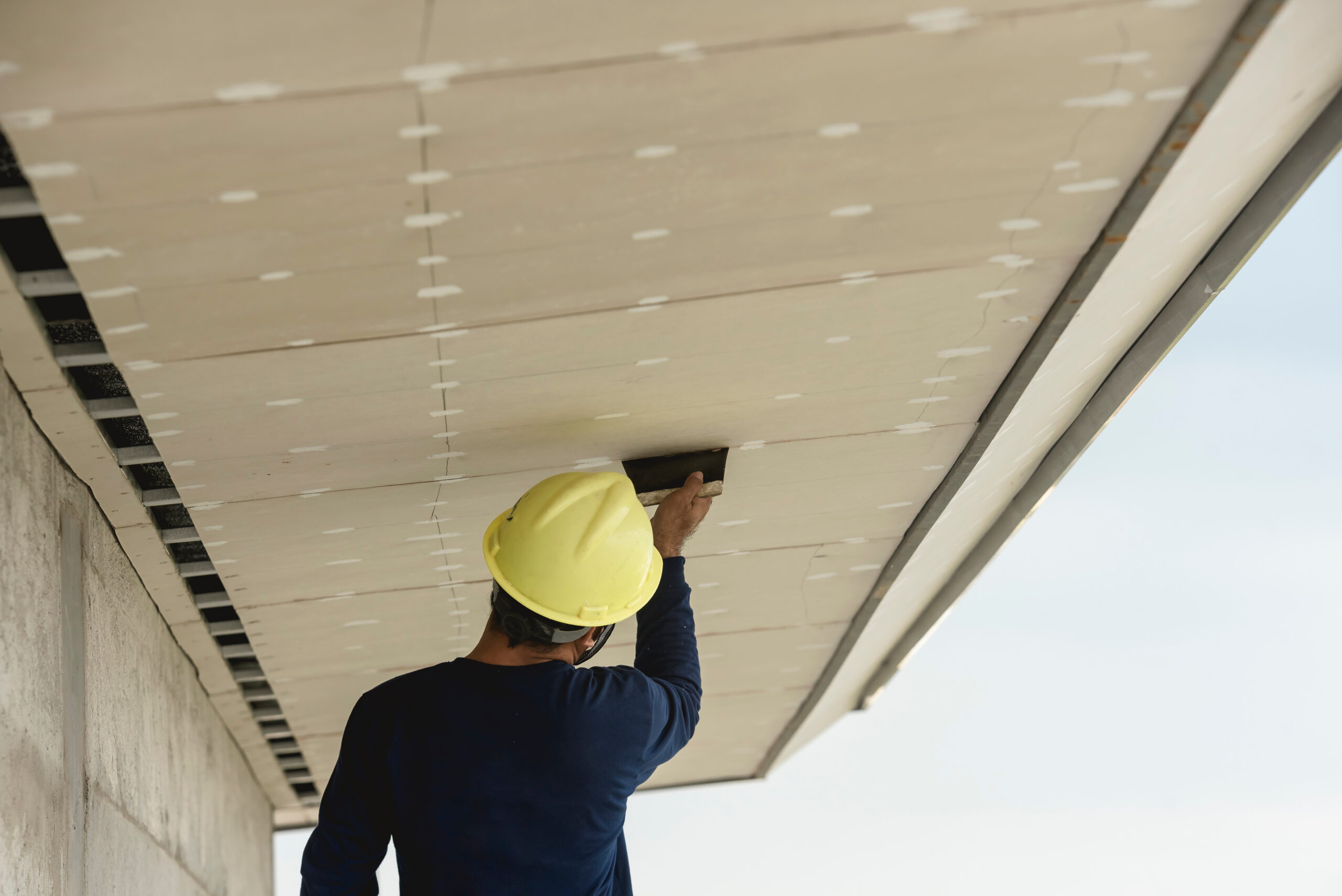Section 179 Deduction: What the OBBBA Expansion Means for Your Business

The One Big Beautiful Bill Act (OBBBA), enacted on July 4, 2025, brings major changes to federal tax policy that small and medium-sized businesses—particularly commercial property owners, building managers, and other industry professionals—need to understand. Notably, the Act expands the Section 179 deduction, allowing businesses to immediately expense qualifying property and certain improvements to nonresidential real estate.
What is the Section 179 Deduction?
Under Internal Revenue Code Section 179, a taxpayer may elect to immediately deduct, up to a certain amount, all or part of the cost of qualifying property in the tax year the property is placed in service. This deduction is claimed on an original or amended Form 4562, Depreciation and Amortization and attached to the tax return. Individuals, partnerships, limited liability companies, and corporations qualify. However, nonprofit organizations, estates, and trusts are not eligible.
To qualify for a Section 179 immediate expense deduction, the property must meet three requirements:
- It must be eligible property.
- It must be acquired for business use.
- It must be purchased, not received as a gift or inheritance.
In addition, Section 179 applies specifically to:
- Personal property used in a trade or business,
- Personal property used predominantly in lodging businesses,
- Qualified improvement property, and
- Certain components of nonresidential real property (e.g., roofs, HVAC, fire, and security systems).
The OBBBA’s Expansion of Section 179
The One Big Beautiful Bill Act introduced several important changes to Section 179:
- Higher immediate deduction: The maximum immediate deduction amount increased to $2.5 million for qualified property placed in service after December 31, 2024.
- Higher phase-out threshold: The phase-out threshold (the ceiling amount) rose to $4 million. Any expenditures above this ceiling reduce the deduction dollar-for-dollar.
- Inflation adjustments: The deduction limits now include inflation adjustments under Section 179(b)(1) and (b)(2). For taxable years after 2025, the $2.5 deduction limit and $4 million phase-out threshold increase automatically based on cost-of-living adjustments.
- Expanded qualified property: The OBBBA codifies prior expansions allowing Section 179 deductions for certain improvements to nonresidential real property. Eligible improvements include:
- Qualified improvement property (QIP): Interior improvements to nonresidential property placed in service after the building is first placed in service
- Specific components of nonresidential real property: Roofs; heating, ventilation, and air-conditioning systems (HVAC) systems; fire protection and alarm systems; and security systems
To qualify as “qualified real property,” these improvements must be placed in service after the building was first placed in service and used predominantly in an active trade or business (26 U.S.C. § 179). Improvements meeting these criteria can be expensed immediately under Section 179, rather than capitalized and depreciated over time. Improvements that do not meet these criteria must still be depreciated under standard rules.
What the OBBBA Did Not Change
While the OBBBA expanded Section 179 in many ways, several rules remain the same.
Section 179 deductions are determined annually based on the cost of qualifying property placed in service in that tax year. Purchases by gift or inheritance do not qualify, while certain credit purchases remain eligible. Taxpayers can plan capital expenditures and claim deductions as eligible purchases are made.
Additionally, when the taxpayer’s Section 179 deduction exceeds the allowable maximum, the excess may be carried forward to subsequent tax years as a “carryover of disallowed deduction.” These carryover rules remain unchanged under the OBBBA and are explained and demonstrated in 26 C.F.R. §§ 1.179-1 and 1.179-2. Carryforward is essential because it lets taxpayers plan capital improvements and maximize the benefit of their deductions over time.
Hypothetical Examples
Let’s look at some examples to better understand the OBBBA’s changes to Section 179.
Taxpayer #1: Nonprofit Organization
Taxpayer #1 owns a homeless shelter for boys. The business is structured as a 501(c)(3) under federal tax laws.
Question: Will this organization benefit from Section 179?
Answer: No, because Section 179 remains strictly for for-profit taxpayers; the OBBBA did not change this requirement.
Takeaway: Section 179 does not allow nonprofits to claim deductions.
Taxpayer #2: Warehouse Owner
Taxpayer #2 owns 43 warehouses across the U.S. and wants to take advantage of the OBBBA’s Section 179 modifications but is concerned about exceeding the $4 million phase-out limit.
Question: What is the best strategy?
Answer: To maximize Section 179 deductions while staying within the limits, Taxpayer #2 should plan capital improvements annually, keeping each year’s expenditures under the $2.5 million immediate deduction limit. Any amount exceeding the limit can be carried forward to subsequent years if there is sufficient taxable income. This approach allows the full cost of improvements across all 43 warehouses to be deducted over time, reducing taxable income, improving cash flow, and lowering the upfront tax burden. This is particularly advantageous for businesses like this one, which relies on warehouses for storage, distribution, or other operational purposes.
Remember that under the OBBBA expansion, certain improvements to nonresidential real property—like roofs, HVAC, fire protection, and security systems—qualify as “qualified real property.” This includes such improvements to warehouses, provided they are placed in service after the building was first placed in service and used predominantly in an active trade or business. Section 179 allows the full cost of these qualifying improvements to be deducted immediately rather than capitalized and depreciated over time.
Takeaway: By timing qualified improvements carefully and leveraging the expanded definition of “qualified real property,” Taxpayer #2 can maximize Section 179 deductions for all 43 warehouses over multiple years. Keeping annual improvements under the $2.5 million limit avoids the $4 million phase-out, while excess amounts can be carried forward if needed. Over time, the OBBBA’s automatic inflation adjustments further support cash flow and preserve future deduction potential, allowing Taxpayer #2 to take full advantage of the new law while remaining compliant with the statute and regulations.
Taxpayer #3: Apartment Complex Owner
Taxpayer #3 owns an apartment complex in the city. All limitations for the year are met, and Taxpayer #3 wants to take advantage of the OBBBA modifications of Section 179.
Question: Does this taxpayer qualify?
Answer: No. Section 179 deductions generally apply to tangible personal property used in a trade or business, as well as certain improvements to nonresidential real property. Residential rental properties, such as apartment complexes, are typically excluded from Section 179 and must be capitalized and depreciated under Section 168 rather than expensed immediately.
This distinction is clearer when we consider how the OBBBA expanded Section 179 for nonresidential properties. Recall that the law now includes specific improvements such as roofs, HVAC systems, fire protection and alarm systems, and security systems. Apartment buildings, as quintessential residential real property, are not directly referenced and therefore generally do not qualify. By contrast, office buildings or other nonresidential structures may qualify, but only for specific property components. The OBBBA allows immediate expensing for eligible improvements, not the entire building, aligning deductions with tangible improvements rather than the real estate itself. Additionally, qualified improvement property is limited to interior improvements placed in service after the building’s original service date, excluding structural elements.
Takeaway: Taxpayer #3 should consult a tax lawyer due to the complexity of the OBBBA’s expanded definition of “qualified improvements,” particularly when distinguishing between residential and nonresidential properties. Whether an immediate expense election is available may turn on whether the taxpayer is upgrading structural elements or making tangible property improvements. The rules overall appear to be clearer for nonresidential structures than for residential ones, like apartment complexes, which are classic examples of residential property.
Note that these examples are hypothetical. The law could change if Congress amends Section 179 or other federal tax laws.
Navigate Section 179 Changes with Legal Guidance
As these hypotheticals illustrate, commercial property owners considering capital improvements should seek legal guidance. Applying Section 179 in the real world is complex. Taxpayers must consider:
- Who is eligible
- What counts as “qualified real property”
- How the dollar limitation applies
- How the phase-out limit works
- When carryforward of excess costs applies
The correct answers to these questions require a thorough understanding of the taxpayer’s situation, including their business structure, financial and tax histories, capital improvement strategies, and long-term business goals. Because Section 179 rules are highly specific and depend on each taxpayer’s circumstances, it is essential to consult a tax attorney to maximize deductions and ensure compliance.
This law blog is written by attorneys at Coleman Jackson, P.C., located at 6060 North Central Expressway, Suite 620, Dallas, Texas 75206, for educational purposes only. It does not create an attorney-client relationship between this law firm and the reader. You should consult with legal counsel in your geographic area regarding any legal issues impacting you, your family, or business.
Coleman Jackson, P.C. | Tax Law, Business Law, Immigration Law | English: (214) 599-0431 | Spanish: (214) 599-0432

